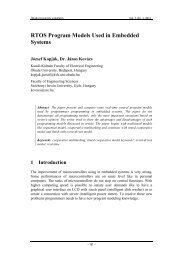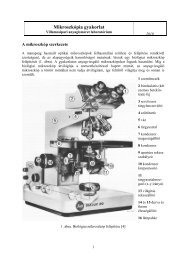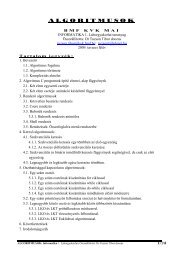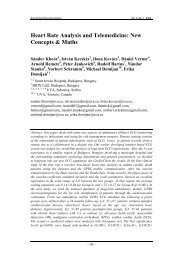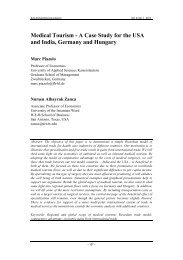You also want an ePaper? Increase the reach of your titles
YUMPU automatically turns print PDFs into web optimized ePapers that Google loves.
Francis Edel<strong>in</strong>e <strong>The</strong> use <strong>of</strong> colour <strong>in</strong> visual poetry<br />
2.6 Francis Edel<strong>in</strong>e<br />
If I am allowed to quote one <strong>of</strong> my own works, here is a construction around the<br />
vowel U (Fig.10). If you rotate the letter four times by 90°, giv<strong>in</strong>g to each stage a<br />
different colour, you obta<strong>in</strong> a perfectly symmetric figure, apparently made <strong>of</strong> a<br />
circle <strong>in</strong>scribed <strong>in</strong> a square. This is also the basic structure <strong>of</strong> a tantric Mandala.<br />
<strong>The</strong> orig<strong>in</strong>al work is made <strong>of</strong> four transparent sheets <strong>of</strong> paper, carefully aligned,<br />
each one with the letter U pr<strong>in</strong>ted <strong>in</strong> a s<strong>in</strong>gle colour. <strong>The</strong> four selected colours<br />
(yellow, blue, green and red) are the traditional colours used <strong>in</strong> Mandalas.<br />
2.7 Arnaldo Antunes<br />
Fig.10<br />
ANTUNES is a Brazilian poet, younger and clearly <strong>in</strong>fluenced by de CAMPOS :<br />
<strong>in</strong> his circular poem Chromosome (Fig.11) he uses the type face created by the<br />
latter. He cleverly takes advantage <strong>of</strong> the close resemblance (<strong>in</strong> Portuguese) <strong>of</strong><br />
words like cromossomo, como, cosmos, somo and emphasizes the only outly<strong>in</strong>g<br />
letter R by pr<strong>in</strong>t<strong>in</strong>g it <strong>in</strong> red. This rem<strong>in</strong>ds us <strong>of</strong> the greek root χρωμα (colour) and<br />
σωμα (body), and also (for those who know the fact!) that chromosomes were<br />
discovered and received their name (<strong>in</strong> 1888) because <strong>of</strong> their aff<strong>in</strong>ity for certa<strong>in</strong><br />
dyes, among which the red dye fuchs<strong>in</strong>. <strong>The</strong> circular form <strong>of</strong> course evokes the<br />
liv<strong>in</strong>g cell and the endless cha<strong>in</strong> <strong>of</strong> life.<br />
– 292 –




